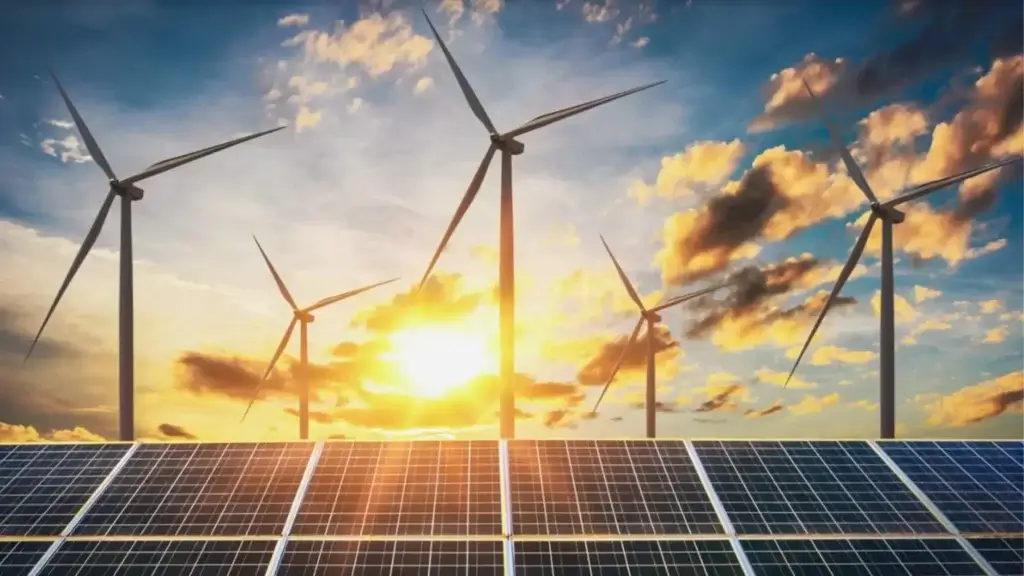
The global population is increasing and it seems only obvious that the available sources of energy will deplete. And this increasing population will consume finite resources to meet our energy requirements. Currently, there are only a handful of coal and petroleum mines that are meeting the energy demand of the growing 7 billion people. On one hand, the finite resources are depleting and on the other, their consumption is depleting the quality of life due to the pollution created by biofuels. The current climate catastrophe has triggered a quest for alternative energy options. This search has forced us to move from conventional to non-conventional sources of energy. But modernising the process of generating energy from clean sources has some infrastructural requirements and we often wonder ‘Are these non-conventional sources of energy any cleaner?’. In this article, we will try to answer this question and discuss if ‘Solar Energy’ is a viable sustainable energy source.
The Climate Emergency

The consumption of non-renewable energy resources is creating a huge impact on the environment. Global temperatures have been increasing at an alarming rate over the past couple of decades. According to the latest report of IPCC 2022, the world is set to reach the 1.5⁰C level. The report further emphasises that only the most drastic cuts in carbon emissions from now would prevent an environmental disaster. However, global warming is just one of the consequences. Besides this, the melting of glaciers, rise in water level, epidemics, droughts, air pollution leading to premature deaths, and severe health issues with humans and animals (this includes genetic mutations as well) are other alarming issues that need attention and action.
With an inescapable appeal to switch over to renewable energy sources from fossil fuels, it is high time that we as an individual and responsible residents of the planet investigate the need of the hour and act accordingly. The most promising option to switch to is the use of renewable resources of energy. These include solar, wind, water and nuclear energy. They are abundant in nature and can supply clean energy. All these sources have their own pros and cons in terms of harnessing and availability but overall, the most potential candidate is the ‘Solar energy’. One of the primary reasons why solar energy is the most coveted is that it is plentiful. According to Professor Washington Taylor, MIT, a total of 173,000 terawatts of solar energy strikes the earth continuously. That’s more than 10,000 times the world’s total energy use. Thus, this energy is clearly sufficient to cater to the energy needs of humanity, if it can be harnessed cost-effectively without harming the environment.
Is Solar Energy or Solar Panels the right answer?
It is an established fact that solar energy can be harnessed through Photo-voltaic (PV) cells. Initially, these cells were quite expensive; hence, it took a lot of time and research to reduce their cost and bring it to popular culture. Solar cells or PV cells, as we know them today, are pocket friendly and involve hassle-free installation.
But the question is that ‘Is solar energy ‘actually’ clean?’ Does harnessing it involves a Carbon Footprint?
The answer is YES.

According to reports, around 50 gm of CO2 is produced per kilowatt-hour of energy produced in the initial years.
Carbon Footprint Of Solar Panel Production
- Silicon is one of the main raw materials for making solar panels. It is refined to polysilicon for fabrication. The by-product of this process is silicon tetra chloride. It is produced in a ratio of 4:1, a liquid that is harmful when mixed with water. Silicon tetra chloride can be further refined but the process is expensive.
- Besides silicon, other rare earth metals and minerals are essential for panel manufacture. The complicated technologies, unethical land use, and unregulated waste disposal further increase the carbon footprint.
- The shelf life of an average panel is roughly 20-25 years. After this, the disposal of the panel becomes an issue of concern. If not done with adequate safety measures, it threatens humans, animals and the environment at large.
- The transportation cost of the panels from the production site to the customer is perhaps the least talked about. However, the carbon footprint of transport vehicles is significant and contributes greatly to greenhouse gas emissions.
Solar Energy a Sustainable Option
The solar carbon footprint is significant but is present only during the manufacturing process. Majorly, it occurs in the raw material production of PV cells. However, this is about 20 times less than what is produced by coal-powered electricity sources. Thus, using solar energy no doubt decreases the carbon footprint. But typically it takes around three years for the PV cells to become carbon neutral and pay off their carbon debt. The average life span of a solar cell is around 20 years. So for roughly 17 years, this source of energy is clean.
In its report, the IPCC foregrounded the following three aspects:
- Decrease in the use of fossil fuels.
- Reduction in consumption of Meat and dairy.
- Environment-friendly urban planning – Greener cities.
Besides these, we as individuals can do our own little efforts beneficial to the environment, using energy-efficient light sources, eliminating single-use plastic, using water efficiently, using public transport more, cycling to work as often as possible, going digital and making “paperless office” a reality!! and reduce waste. These may be small efforts but can create a major change if implemented in society. So it is our part as well to create awareness among the people so that our planet becomes a cleaner, safer and better place to live in.

I agree with your point of view, your article has given me a lot of help and benefited me a lot. Thanks. Hope you continue to write such excellent articles.
Reading your article helped me a lot and I agree with you. But I still have some doubts, can you clarify for me? I’ll keep an eye out for your answers.
Sure, go ahead…